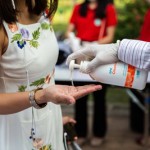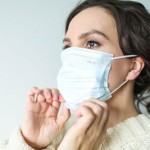Is self-quarantine really the solution?
View(s):By definition, quarantine is a state, period, or place of isolation in which people or animals that have arrived from elsewhere or been exposed to an infectious or contagious disease are placed. It is to refrain from any contact with other individuals for a period of time (such as two weeks) during the outbreak of a contagious disease usually by remaining in one’s home and limiting contact with family members.
This aims to reduce the transmission of a contagious disease during an outbreak, individuals are typically asked by health officials to self-quarantine following known contact with an infectious person or after returning from a region where cases of the disease are widely reported.
As you may understand from the definition itself, getting yourself quarantined means when you are suspected to have been in contact directly or indirectly with a person who was tested positive for COVID-19, you have to quarantine yourself for safety issues. It is not just to determine whether you got it as well at the end of two weeks but also to eliminate the chances of you spreading it, in case you become a carrier.
So then, the question is, why did the government impose a lockdown for all the citizens even without suspicions that all of them were exposed to the virus? I’m tackling a controversial question, so bear with me till the end and I hope there won’t be any misunderstandings.
What did the lockdown do? It avoided people gathering in public places, it stopped the rapid spread and the curve started flattening itself. But let me ask a question. During that small few hours break the government gave to the citizens to go out and get yourself stocked up with the necessities, how many of who might have touched the same surface in that same supermarket? And wouldn’t that have made you bring some microorganisms home with you? Well yes. But there were ways to get rid of that. Simply, what you should have done was correctly wash your hands, sanitize yourself and not get in contact with any of your family members before taking a bath when you come indoors after going out. It is simple as that, but if you were not careful enough to do simple procedures like that, the entire effort of the government imposing lockdowns and you being home for weeks will just go down the drain.
How does COVID-19 spread?
The virus is transmitted through direct contact with respiratory droplets of an infected person (generated through coughing and sneezing). Individuals can also be infected from touching surfaces contaminated with the virus and touching their face (e.g., eyes, nose, mouth). The COVID-19 virus may survive on surfaces for several hours, but simple disinfectants can kill it.
Now think about it. What is really the solution? Self-discipline. If you know how to take the necessary hygiene precautions and take care of yourself, and are careful enough to implement them by yourself, a state lockdown is not even necessary. The people themselves can avoid large gatherings, keep social distance, stay home, wear masks when you go out, wash your hands properly, clean and disinfect where you live, and take proper nutrition to boost up your immune system; you will be safe and sound.
In a more understandable way, how can the spread of COVID-19 be slowed down or prevented?
As with other respiratory infections like the flu or the common cold, public health measures are critical to slow the spread of illnesses. Public health measures are everyday preventive actions that include:
Staying home when sick.
Covering mouth and nose with flexed elbow or tissue when coughing or sneezing.
Dispose of used tissue immediately.
Washing hands often with soap and water.
Cleaning frequently touched surfaces and objects.
The first hygiene practice we all learn is ‘how to wash your hands’. In case you have forgotten, below, I have mentioned in simple steps:
Step 1: Wet hands with safe running water.
Step 2: Apply enough soap to cover wet hands.
Step 3: Scrub all surfaces of the hands – including backs of hands, between fingers and under nails – for at least 20 seconds.
Step 4: Rinse thoroughly with running water.
Step 5: Dry hands with a clean, dry cloth, single-use towel or hand drier as available.
And when do you have to wash your hands?
Wash your hands often, especially before and after eating; after blowing your nose, coughing, or sneezing; going to the bathrooms or toilets and whenever your hands are visibly dirty. If soap and water are not readily available, use an alcohol-based hand sanitizer with at least 60% alcohol. Always wash hands with soap and water, if hands are visibly dirty.
Coming back to the initial question, is self-quarantine really the solution? Actually no, unless you don’t have the self-discipline to perform the necessary hygienic measures, getting lockdown won’t eradicate this pandemic. Let’s be responsible at least for our own health!
- Hiruni Dasanayake






